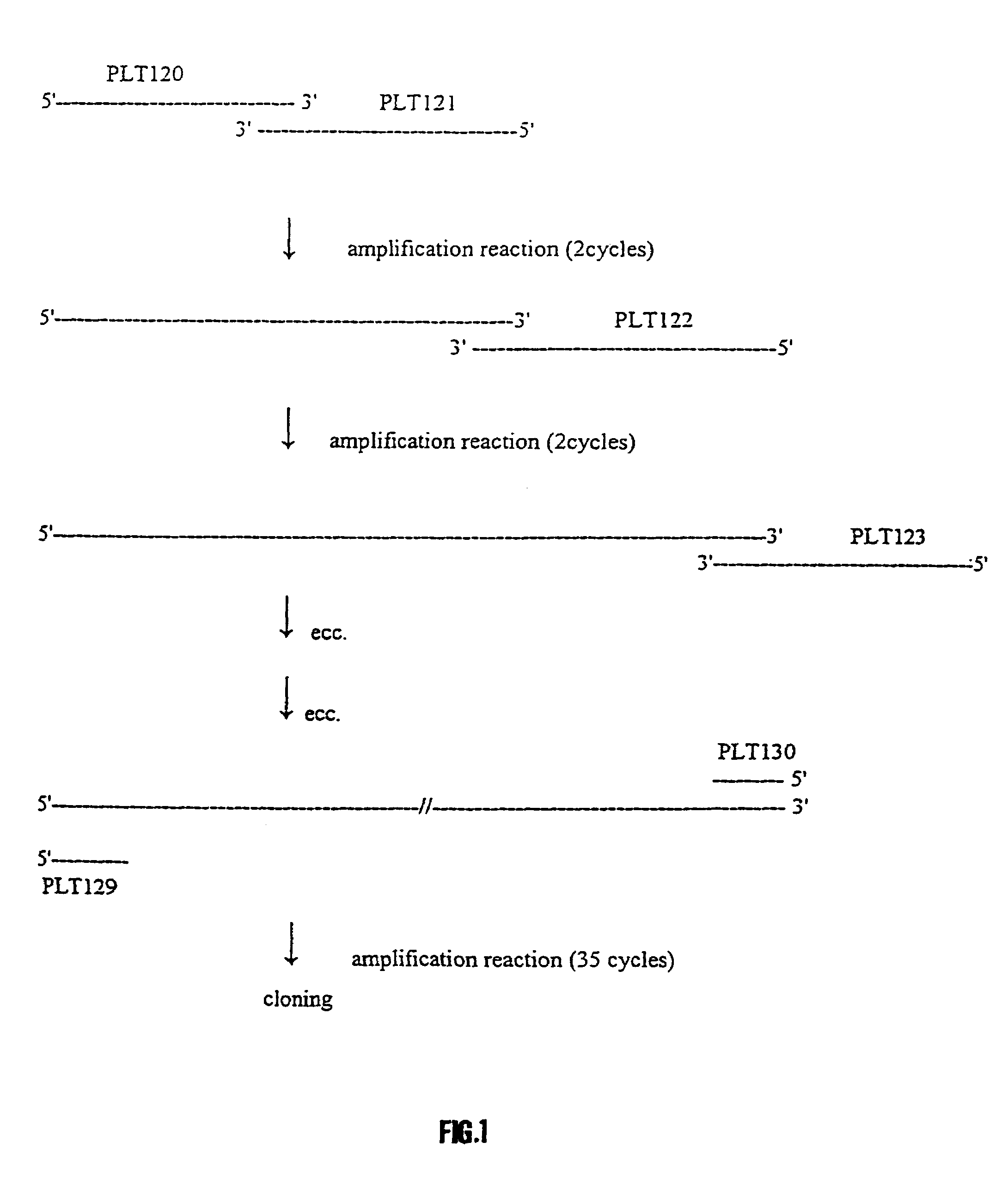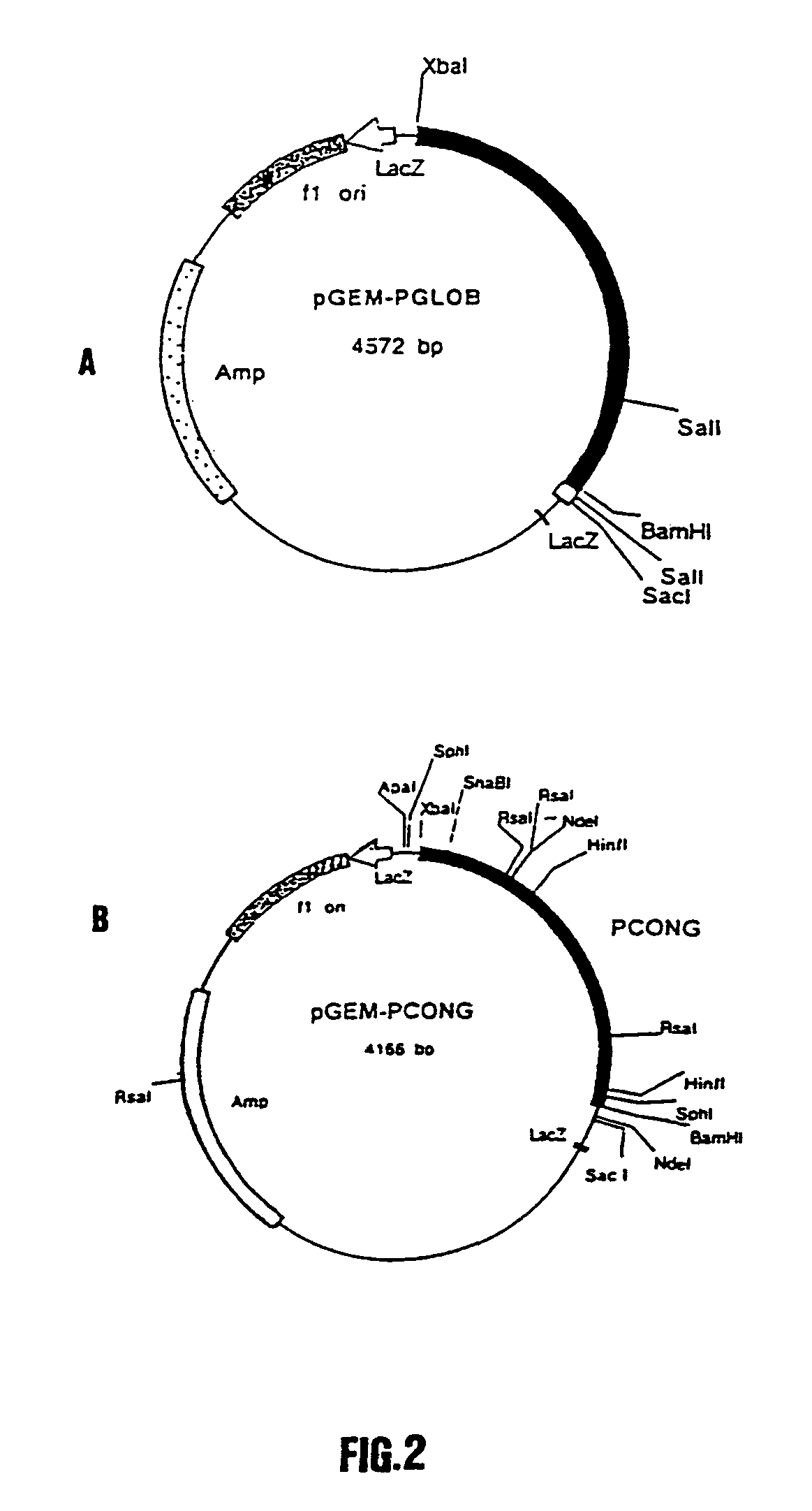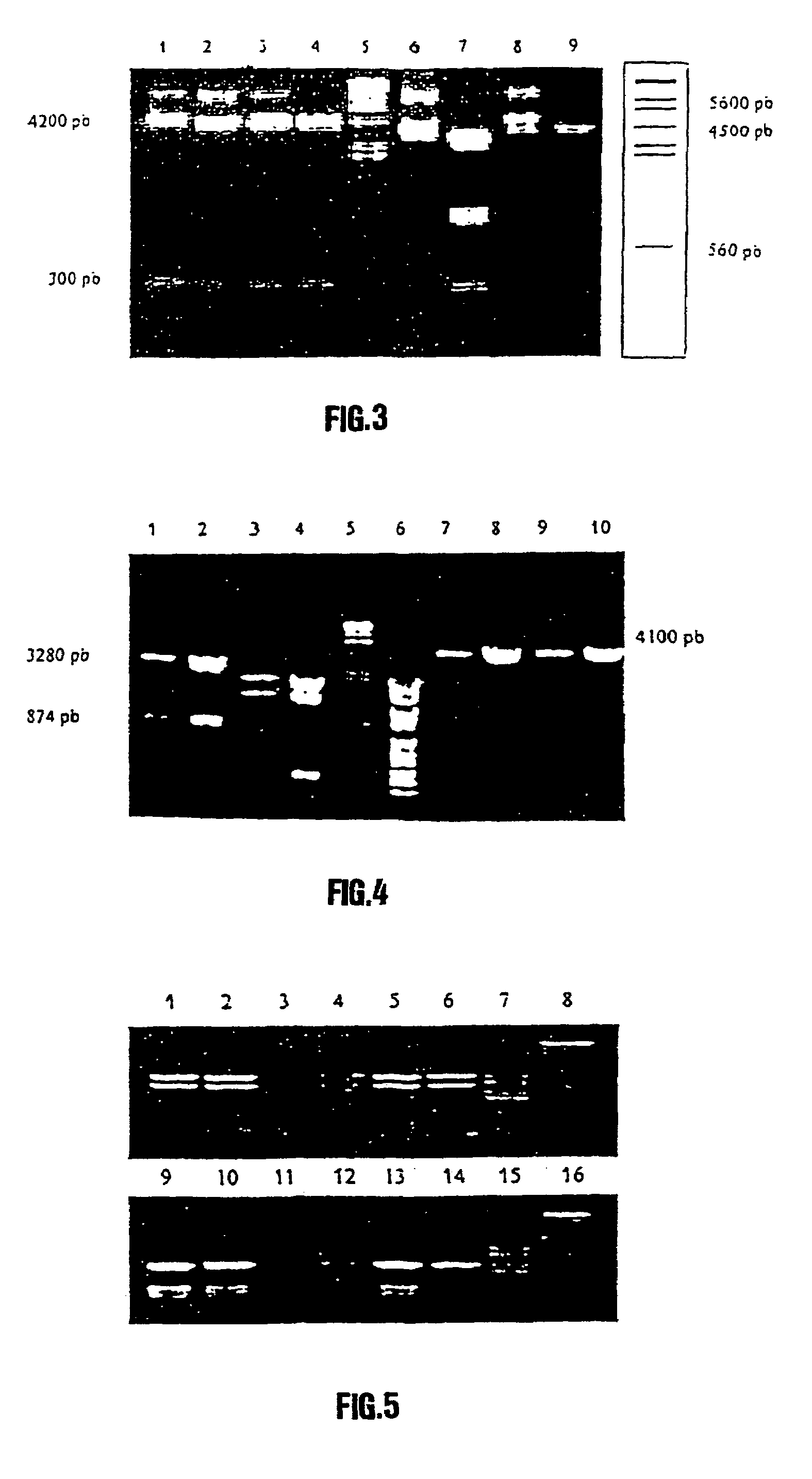Synthetic polynucleotide coding for human lactoferrin, vectors, cell and transgenic plants containing it
- Summary
- Abstract
- Description
- Claims
- Application Information
AI Technical Summary
Benefits of technology
Problems solved by technology
Method used
Image
Examples
example 1
[0119]Agrobacterium Tumefaciens-Mediated Tobacco Transformation
[0120]Day 1
[0121]A small amount of Agrobacterium tumefaciens of strain EHA 105, taken from a petri plate culture with a sterile loop so as not to exceed in the amount thereby avoiding subsequent problems in controlling bacterial proliferation on plated leaf disks, was inoculated in 2 ml of sterile LB. Then, from a healthy tobacco plant of Petit Avana variety a leaf showing no alteration whatsoever, conversely showing optimal turgor conditions, was taken. The leaf was briefly washed in bidistilled water to remove surface impurities, immersed for 8 min in a 20% sodium hypochlorite and 0.1% SDS solution and left to dry under a vertical flow hood. From then on all steps were carried out under hood. In particular, the leaf was immersed in 95% ethanol and shaken in order to completely wet the pages thereof (letting the petiole emerge) for 30-40 sec. The leaf was then allowed to dry out completely.
[0122]Disks were obtained from...
example 2
[0134]Rice Transformation by Physical Methods
[0135]Rice seeds of Ariete and Rosa Marchetti varieties were harvested at milky ripening, when the endosperm is still liquid. The embryo was isolated with a lancet after removal of the two glumes. Immature embryos are of different size and shape, depending on the number of days elapsed from blooming: The ones deemed most suitable for the in vitro culture and the successive transformation, i.e. those of an 1.5 mm average size, were cultured on a medium containing 2,4-D auxine to promote scutellum cell division and suppress differentiation of young embryos, obtaining cellular proliferation of the scutellum area. At this stage embryos underwent bioholistic transformation, with the following parameters: particle size 1.5-3 μm, particle concentration 500 μg, membrane rupturing pressure 1.100 psi, membrane-microcarrier gap 6 mm, microcarrier stop-point gap 6 mm, stop-point target gap 10.5 cm.
[0136]Transformation was effected by a cotransformati...
example 3
[0141]Purification of Lactoferrin Protein from Different Tissues of the Plant and Assessment of Molecular Weight.
[0142]Extraction of all the proteins of tobacco seed was performed grinding the seeds in liquid nitrogen in presence of an extraction buffer (0.5 M saccharose, 0.1% ascorbic acid, 0.1% Cys-HCl, 0.01 M Tris-HCl, 0.05M EDTA pH 8).
[0143]Then the solution was centrifuged for 30 minutes at 14.000 rpm at 4° C. and the supernatant was kept with the soluble proteins.
[0144]Then the solution was filtered with filters of 0.2 μm porosity, and the lactoferrin partially purified by removing proteins of a molecular weight lower than 30 KDa by centrifugation in Centricon 30 column (Amicon).
[0145]The lactoferrin was further purified by HPLC chromatography on Resource Q column (Pharmacia) at a weak cationic exchange, with elution in phosphate buffer pH 7 and NaCl gradient 20-100%. The peak corresponding to lactoferrin eluted at 0.7 M NaCl.
[0146]The fractions of the elution range were reuni...
PUM
| Property | Measurement | Unit |
|---|---|---|
| Volume | aaaaa | aaaaa |
| Volume | aaaaa | aaaaa |
| Volume | aaaaa | aaaaa |
Abstract
Description
Claims
Application Information
 Login to View More
Login to View More - R&D
- Intellectual Property
- Life Sciences
- Materials
- Tech Scout
- Unparalleled Data Quality
- Higher Quality Content
- 60% Fewer Hallucinations
Browse by: Latest US Patents, China's latest patents, Technical Efficacy Thesaurus, Application Domain, Technology Topic, Popular Technical Reports.
© 2025 PatSnap. All rights reserved.Legal|Privacy policy|Modern Slavery Act Transparency Statement|Sitemap|About US| Contact US: help@patsnap.com



